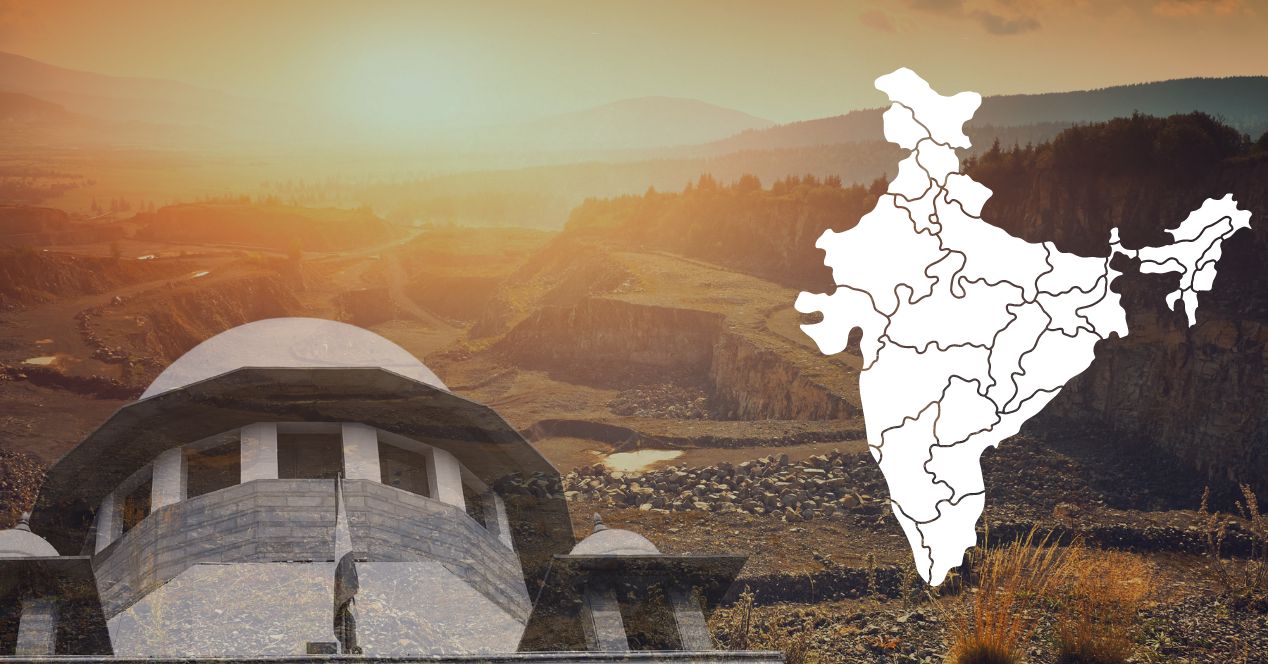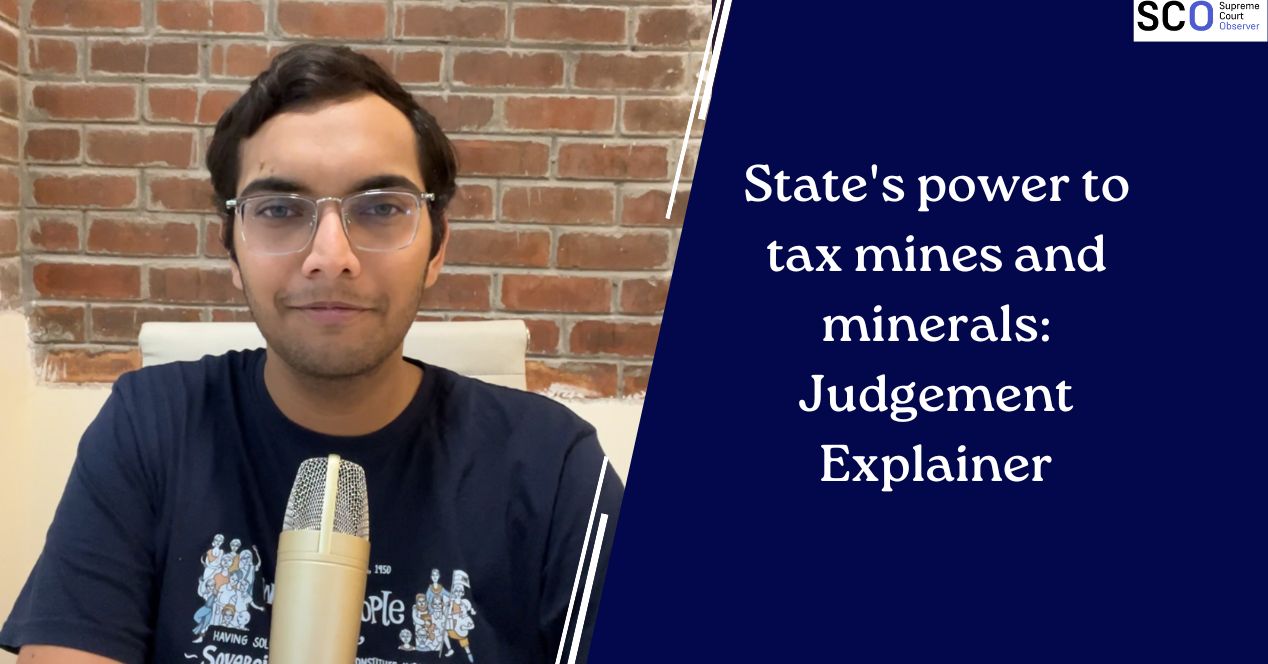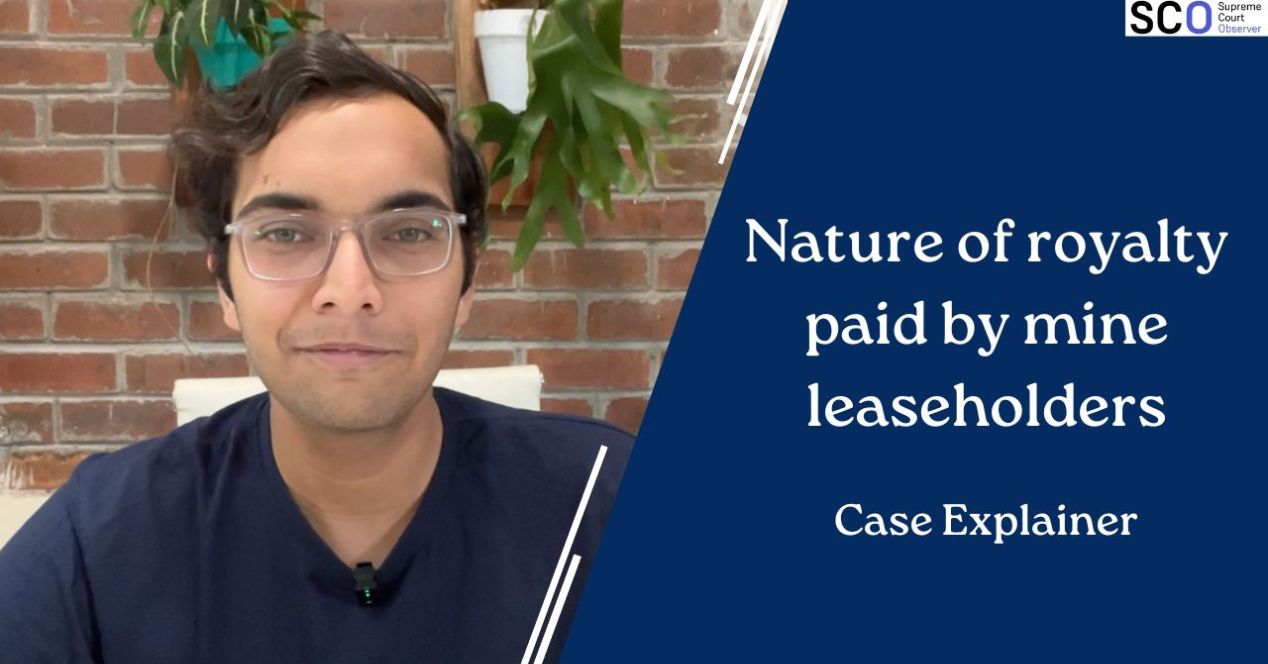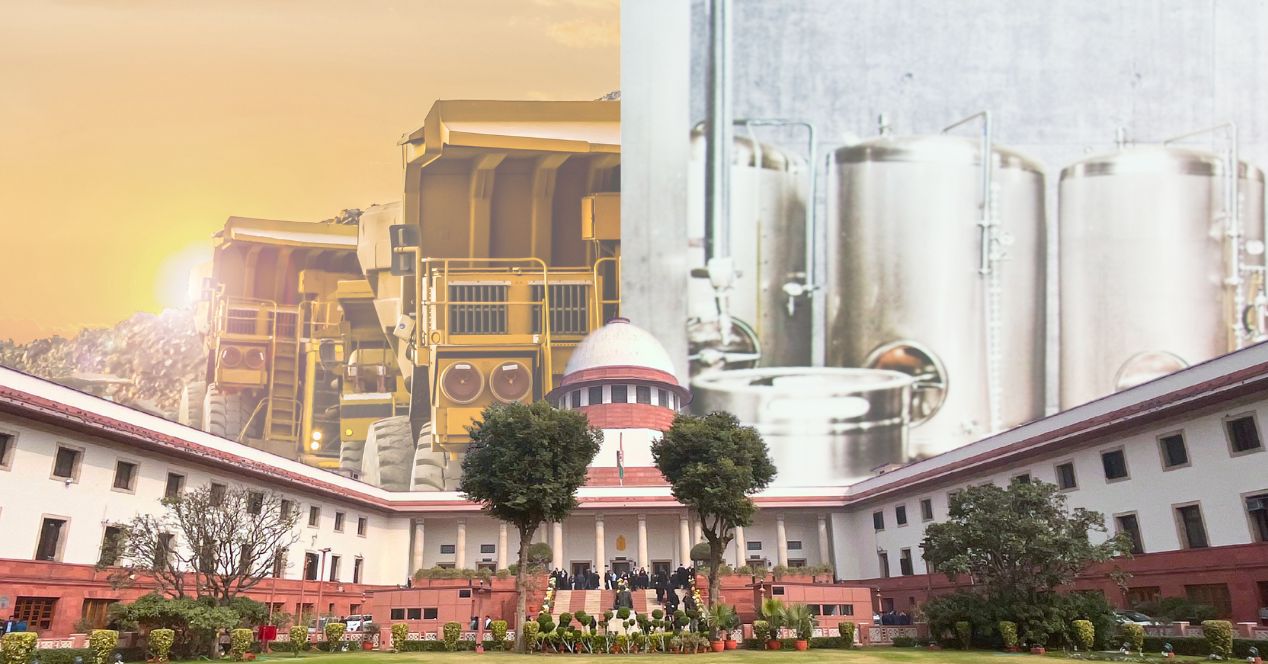Analysis
‘Race to the bottom’: The possible consequences of the mineral royalty judgement
The retrospective application of the decision to allow states to tax mines and minerals could have first- and second-order economic impacts

On 25 July 2024, in Mineral Area Development Authority (MADA) v Steel Authority of India (SAIL), a nine-judge bench of the Supreme Court delivered a significant judgement. The majority declared that royalty on mining is not in the nature of a tax and overruled the judgement in India Cement v State of Tamil Nadu (1989). A few days later, the Court delivered an order which made the judgement retrospectively applicable from 1 April 2005.
Given this background, I analyse the impact of the majority opinion in MADA and the clarificatory order that was delivered subsequently.
A culmination after 35 years
In India Cement, a seven-judge bench held that royalty is a tax. It had the effect of taking away the states’ power to impose cess or tax on royalty in mining. In subsequent judgments, the Supreme Court reiterated this position. However, in State of West Bengal v Kesoram Industries (2004), the majority opinion delivered by the five-judge bench observed that India Cement contained a typographical error—where it said “royalty is a tax”, it meant to say “cess on royalty is a tax”.
However, India Cement continued to hold the field since it was delivered by a larger bench. In March 2011, the Supreme Court had referred the matter to a nine-judge bench, which was expected to put a line under the debate about whether royalty was or was not a tax.
The judgement in MADA v SAIL marks a significant jurisprudential shift because it overrules India Cement. The majority clarified the scope of the judgement and stated the following in its clarificatory order:
- The states, according to their discretion, may levy or renew tax demands in keeping with the judgement in MADA. But this will not extend to transactions prior to 1 April 2005.
- Interest and penalties that were levied on demands prior to 25 July 2024 will stand waived off.
- There will be a 12-year period commencing from 1 April 2026 for the staggered payment of the tax demands.
Impact on pending proceedings
Post Kesoram and the reference order in 2011, multiple High Courts were faced with the question of whether a tax or cess levied by a state on royalty in mining was legally permissible. In many cases, the High Court passed interim orders making the litigation’s outcome contingent on the judgement in MADA. The interim relief ranged from prevention of coercive action for non-payment of tax to a stay on tax demands.
I submit that the approach taken by the High Courts was incorrect. The law laid down in India Cement occupied the field as per the principle enunciated by the Supreme Court in State of Maharashtra v Sarva Shramik Sangh, Sangli (2013). In that case, concerning the retrenchment of workers in a government irrigation department, the state of Maharashtra had argued that the activities of the department could not be considered to be “industry”, as defined in the Industrial Disputes Act.
The determination of the scope of this definition was pending before a larger bench. But the Court in Sarva Shramik Sangh, relying on its 1988 decision in State of Orissa v Dandasi Sahu, held that it would not be justified “to allow a party to further prolong or upset adjudication of old and stale disputes till the decision of the larger bench is received.”
The principle was again endorsed by the Court in M.S. Bhati v National Insurance Co. Ltd (2019). In Union Territory of Ladakh v Jammu and Kashmir National Conference (2023), the Supreme Court stated that High Courts should proceed to decide matters on the basis of “the law as it stands” even if the matter has to do with issues that are pending reference. The Supreme Court ought to have considered this principle when deciding whether the mineral royalty judgement should have been applied prospectively or retrospectively.
As things stand, mining companies (especially those with pending proceedings) which had arranged their affairs in keeping with the law that was binding upon them stand greatly affected by the majority judgement. During the hearing, Solicitor General Tushar Mehta argued that giving retrospective effect to the judgement would open the floodgates to excessive litigation of contractual disputes as companies may back out of agreements by invoking the “change in law” provisions.
In some cases, as pointed out by Senior Advocate Harish Salve during arguments, the retrospective tax demands would exceed the net worth of companies. However, it is to be noted that the pending proceedings will be decided on a case-to-case basis, considering the factual background of each matter.
An uneven economic impact
A 2011 report by the Ministry of Mines, Government of India had noted that the Central Government had steeply increased the rate of royalty payable since February 1992. This was done to compensate for the loss of revenue to states in the wake of the judgement in India Cement. This is one reason why the retrospective application of the judgement is debatable—the states had already made up lost revenue by charging increased royalty.
Another reason against retrospective application would be the lack of uniformity in the economic impact of the judgement across states. Post-Kesoram, certain states like Chhattisgarh, Rajasthan and Madhya Pradesh had enacted laws that empowered them to collect tax on royalty. But, in states like Bihar and Odisha, such enactments had been struck down by High Courts for the lack of legislative competence.
The Solicitor General had also submitted to the Court that certain states did not wish to collect dues accrued before the decision in MADA. The economic impact of the judgement would vary across states, depending on the taxation policy it adopted in the past, and plans to adopt in the future.
Mining companies that work in states such as Odisha and Jharkhand, which did not have an operational taxing legislation on the day of the judgement, would be adversely impacted. In the period between the 25 July judgement and the decision on retrospective application on 14 August, the Jharkhand Assembly has already passed a Mineral Bearing Land Cess Bill to levy a charge on mined minerals. The Bill awaits the assent of the Governor.
As pointed out by Justice B.V. Nagarathna in her dissenting opinion, this uneven economic impact has the potential of creating unhealthy competition between states for the derivation of additional revenue. She also warned that this might result in unhealthy competition among mining companies to obtain mining leases in states that do not seek to impose levies apart from royalty.
It might also result in companies and non-extracting states importing minerals which might drain the foreign exchange reserves of the country. There could be a slump in mining activity in certain mineral-extracting states, due to levies that the states are now authorised to impose.
In a country where power-generation is majorly coal-based, the judgement could also have a ripple effect on power tariffs since power generation companies are expected to invoke “change in law” provisions in power purchase agreements to pass on the increased costs from coal companies to consumers.
It’s still early days to judge how the decision plays out in practice. There’s a view that the financial burden on mining companies is being overstated. A report by brokerage firm Motilal Oswal, for instance, suggests that the financial fallout isn’t expected to be as severe since the Court has provided for the demands to be met in a staggered manner over 12 years.
Impact on future litigation
Since the judgement changes the landscape on the interpretation of royalty taxation, it’s expected to have an effect on other laws. Take the Oilfield (Regulation and Development) Act, 1948 (ORDA), for instance. The royalty provisions in Section 6A of the ORDA are in pari materia with Section 9 of the Mines and Minerals (Regulation and Development) Act, 1957.
In MADA, the Supreme Court concluded that “lands and buildings” in the taxation-related Entry 49 of List II of the Seventh Schedule includes mineral land. Now, this argument could potentially be extended to lands bearing mineral oil. Though there was a prayer made in MADA for the addition of questions pertaining to royalty under Section 6A of the ORDA, the Court declined it and left the matter open for future litigation.
The judgement is also expected to have an impact on the pending litigation in Udaipur Chamber of Commerce and Industry v Union of India, where the question before the Court is whether a Goods and Services Tax or Service Tax can be imposed on mining royalties. This matter is an appeal from a Rajasthan High Court decision which held that royalty imposed is a consideration paid by the mine leaseholder.
If royalty is a consideration and not a tax, as MADA concluded, the transaction could be seen as one for the assignment of a right to use minerals. In a case like Udaipur Chamber of Commerce, it could now be argued that such an assignment is relatable to a ‘service’ and the state will have the power to impose Service Tax on it.
***
In Shivashakti Sugars v Renuka Sugars (2017), the Supreme Court stated that the courts have a duty to undertake an economic analysis of the impact of their decisions. Where two views are possible on the application of law, the court must prefer the view “which subserves the economic interest of the nation.” The top court also specifically cautioned courts to avoid legal outcomes that may have an adverse effect on the growth of the economy or revenue of a state.
In my limited opinion, the majority in MADA v SAIL failed to carry out this economic analysis. At the very least, the Court could have ensured that its judgement was prospectively applicable, as it had done in India Cements. The decision has sent shockwaves across the mining industry, given that the ruling could result in arrears estimated at Rs. 1.5 trillion. As rightly put by Justice Nagarathna in her dissent, the effect of the majority judgement is likely to cause a “race to the bottom in a nationally sensitive market.”
Disclosure: The author assisted Senior Advocate Arvind Datar, who appeared for the intervenor companies in the matter.
Jannani is a Chennai-based advocate.




